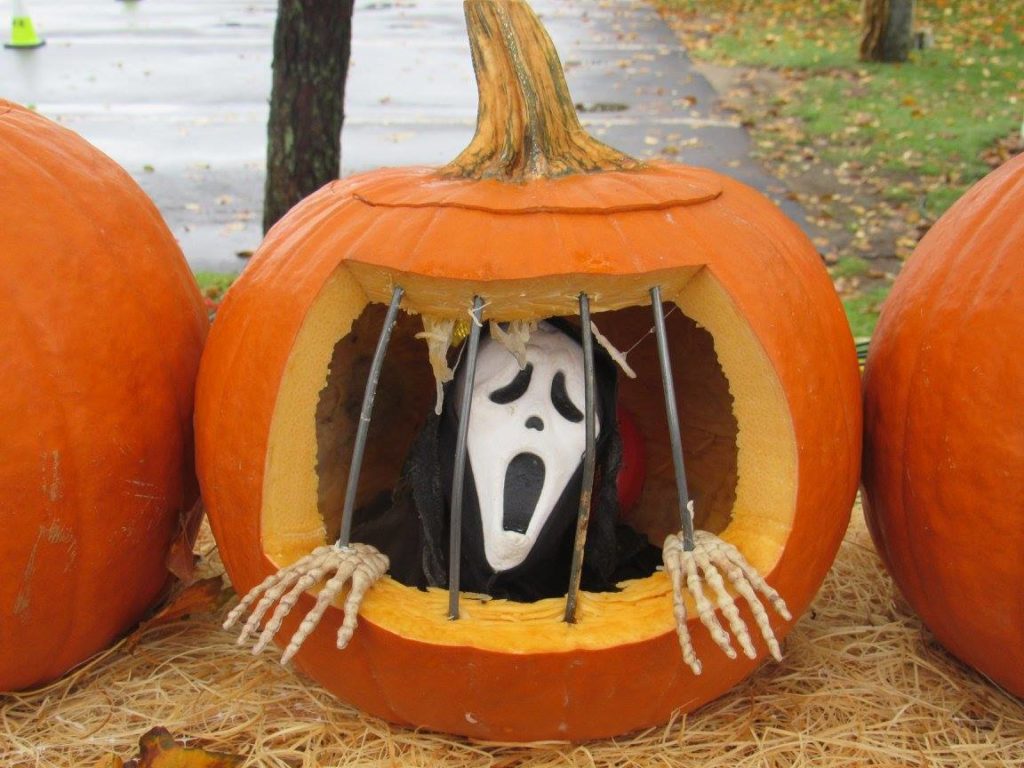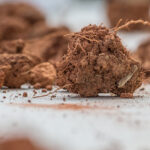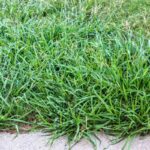
You’re on the hunt for the perfect pumpkin. But what is the perfect time to pick that ideal pumpkin for turning into a Halloween jack-o’-lantern? And how do you keep it from rotting before trick-or-treaters come knocking?
The experts say the answers aren’t carved in stone, but careful selection and care will help.
“Picking a pumpkin that will last from September through October can be hit and miss,” says Mikkal Hodge, President of the Indiana Pumpkin Growers Association and owner of Small Town USA Apples & More. “We grow 4 acres of jack-o’-lantern pumpkins. “Finding a local source is the best way to ensure the money spent buys a long-lasting pumpkin.”
Pumpkin Carver, or Pumpkin Eater?
The pumpkins you buy to carve for Halloween are a different variety than the smaller sugar pumpkins you purchase for pie-making or even table decorations.
- Carving pumpkins grow larger and are more mealy in texture than pie pumpkins, and their thinner flesh makes them idea for carving.
- Pie pumpkins are smaller, have higher sugar content, and have a thicker rind.
Straight From the Patch

Whether you are growing your own or choosing a pumpkin from a pick-your-own patch, Hodge says that most jack-o’-lantern type pumpkins (Cucurbita pepo) do not have issues with rotting on the vine. But local pumpkins are the best option, because the pumpkins will have traveled less and been handled less. They will also be the freshest pumpkins available.
Heavy rains and moisture are the biggest threat to pumpkins and can cause pumpkins to rot. “If you have these conditions in your home garden, a solution is to put a 1-inch layer of sand under the pumpkin,” Hodge says. “This will allow water to drain away and it will keep the fruit off the ground.”
If you plan to carve a jack-o’-lantern, look for a pumpkin without deep ribs or lots of curves — this will create a smoother carving surface. Taller or longer pumpkins tend to have stringier flesh that might be harder to clean away the “pumpkin guts” from the inside of the carving surface.
Remember, half the fun of picking a pumpkin from the field is finding the one that speaks to you — the unique, the oddly shaped, or the one that completely fills your little red wagon. This tops finding the perfectly round, perfectly carvable pumpkin, so go with your heart.
When you have chosen your pumpkin, use a sharp knife to cut it away from the vine. Cut only the stem. Other pumpkins may be growing along the same vine, so keep it intact and don’t nick it or slice into it, says Hodge. “After cutting, set the pumpkin upright in a dry area to allow the stem to dry and harden. After this, the pumpkin should be good for the rest of the season.”
How to Pick the Best Store Pumpkin
You may choose to buy a pumpkin “off the rack” — one already picked and displayed at your local store. There are several things to look for to pick out a pumpkin that will make it all the way to Halloween:
- Make sure that the “handle,” or stem, is strong and sturdy. Soft or missing handles could mean the pumpkin is older, or that it will not store well.
- Look at the color. Your perfect pumpkin should have bright, colorful skin. “Like most fruit, the longer they are off the plant the duller the color tends to get,” explains Hodge.
- Find a flat bottom. This will allow your pumpkin to stand up straight and display its jack-o’-lantern design.
- Avoid squeezably soft pumpkins. Make sure the skin is hard and inspect for punctures, nicks or cuts that could attract insects or make pumpkins rot faster.
- Buy local, says Hodge. “A local producer may cost you a little more, yet the quality that you will get is much better than making a second trip somewhere to buy another pumpkin.”
- Choose a pumpkin variety that works well for carving. Hodge grows Phat Jack, Kratos, Secretariat, Captain Jack, Orange Sunrise, and Magic Lantern varieties among others. Ask your store manager or pick-your-own farmer what kinds of pumpkins are offered.
How Long Before Halloween to Buy Your Pumpkin
You could choose a healthy pumpkin in September. But Hodge says it’s best to keep the pumpkin carving for the week of Halloween.
Once you cut into the pumpkin, the clock is ticking for the rotting process.
“Weather plays a big role in how long a carved pumpkin will last. The hotter it is, the faster the pumpkin will go bad, the cooler it is, as long as it stays above freezing, the longer it will last. The caveat is that if a pumpkin freezes then thaws, it will essentially collapse in front of you.”
Prepare to Carve

- Wash the pumpkin to ensure that the skin is clean and free of dirt, oil, or debris. This is also a good time to check for any damage or soft spots that will affect the carving and keep the pumpkin fresh. Use a bleach solution ( about 2 to 3 tablespoons of bleach to 3 gallons of cold water) to thoroughly clean the pumpkin. Submerge the pumpkin in the solution, or fill a spray bottle with a few teaspoons of bleach to a quart of water. Bleach kills mold and bacteria and can prevent spoiling. Dry with paper towels and air dry after bleaching. Or, for a more-natural, Earth-friendly option, wash with a tea tree oil solution.
- Make a line with a marker around the stem where the hole will be cut. “This hole should be large enough to get your hand and whatever source of light you plan to use safely into the pumpkin,” says Hodge.
- Angle the knife toward the stem and cut all the way around the stem. The angle allows you to replace the stem portion back on the pumpkin without having it fall inside.
- Scrape all of the seeds out. “I also like to scrape the walls thinner, thus making it easier to carve,” says Hodge. You can clean the pumpkin seeds and roast them for a delicious snack.
- Use a template or DIY your own design, and use proper carving tools with serrated edges for greater control.
- Apply petroleum jelly (vaseline) or vegetable oil to the cuts. That keeps Halloween pumpkins from drying out too soon or getting mushy.
After Halloween
Hodge doesn’t advise using a carved jack-o’-lantern for pies after it has languished on your front porch. “Once you carve the pumpkin, bacteria and fungi begin the process of decomposing the fruit.” But you could carve the pumpkin, take a picture of it, and then immediately cut it up to cook it for the pie’s pureed filling.
After you have finished displaying your pumpkin, chop it into pieces. Add it to your compost pile or fallow garden spot.
“Have fun picking out a pumpkin,” says Hodge. “Go to a pumpkin patch and make memories. The fun and knowledge gained from visiting a local pumpkin patch not only enriches your life, it has a direct impact on the community around you.”
Fun Pumpkin Facts
- Illinois is the No. 1 pumpkin-producing state in the United States.
- The world record pumpkin was grown by Mathias Willemijns of Belgium and weighed 2,624 pounds, according to Guinness World Records. The North American record was grown by Steves Geddes and weighed 2,528 pounds.
- Pumpkins contain large amounts of potassium and vitamin A.f
- There are varieties of pumpkins that contain seeds with no hull, making the seeds easy to roast and eat without having to remove the husk.
Main image credit: Michelle Milla





